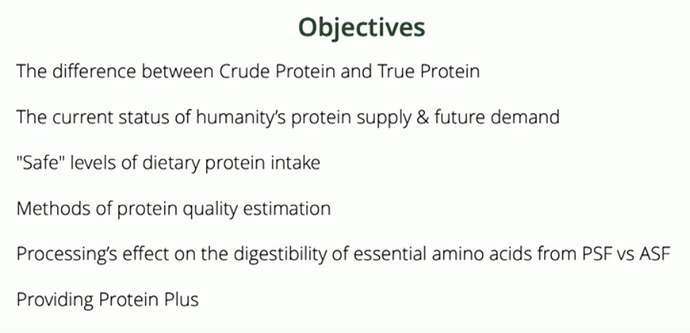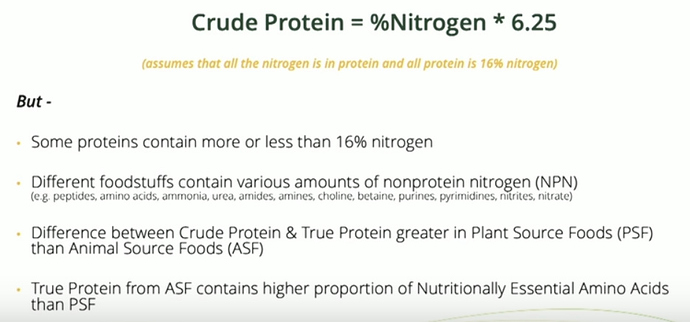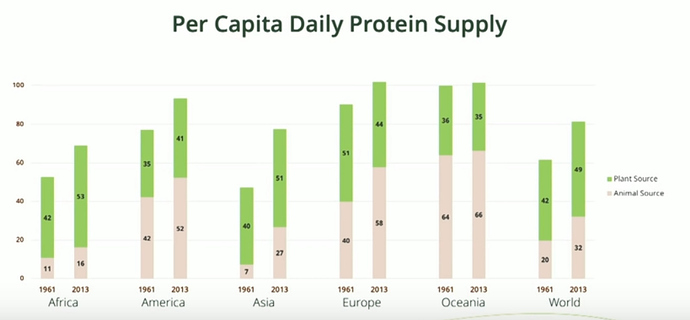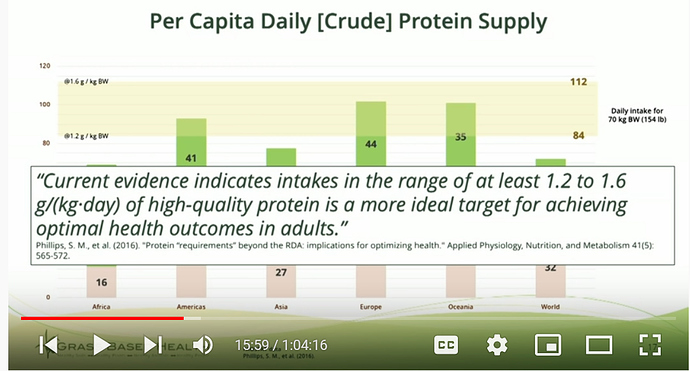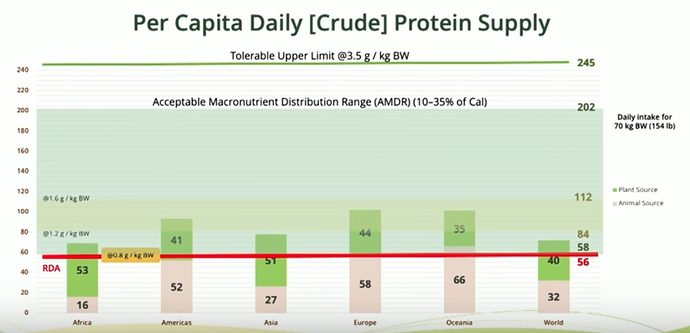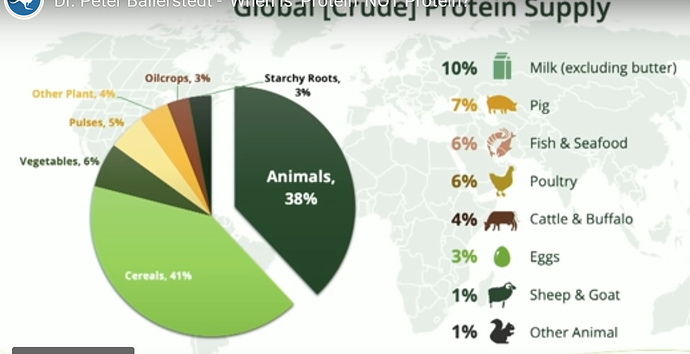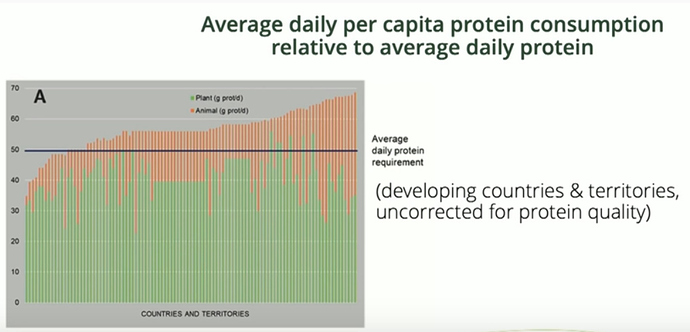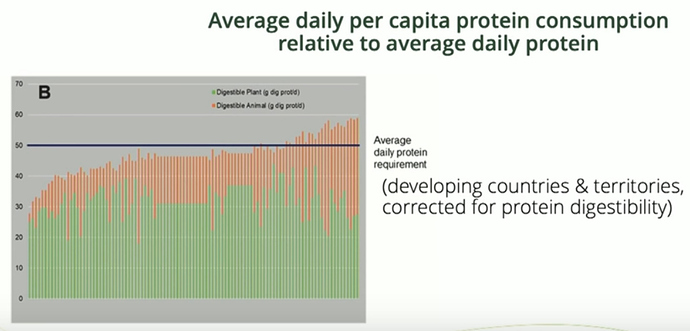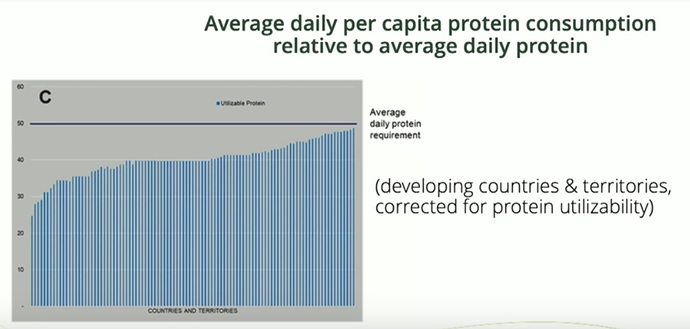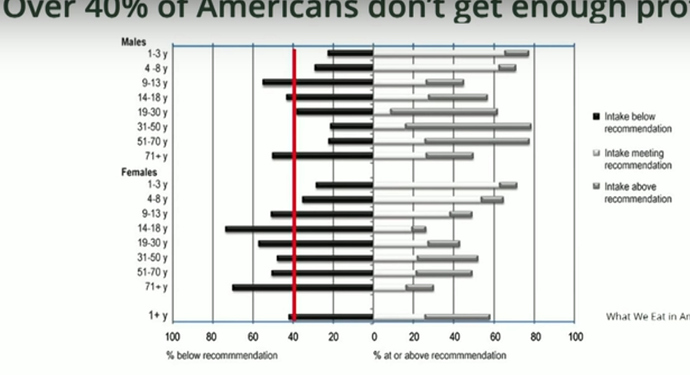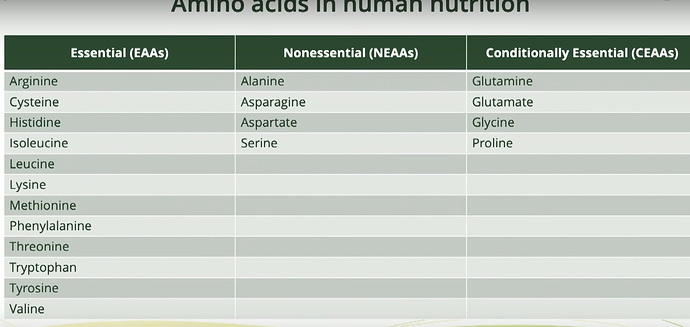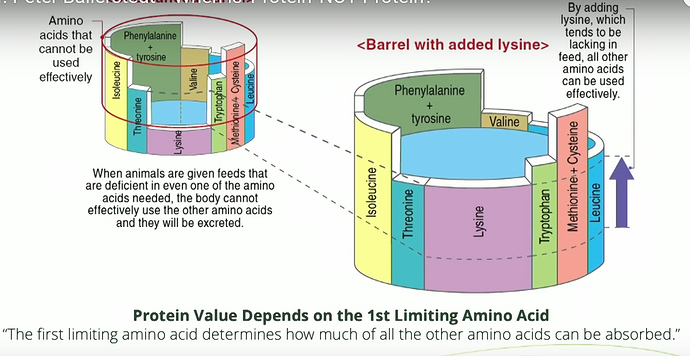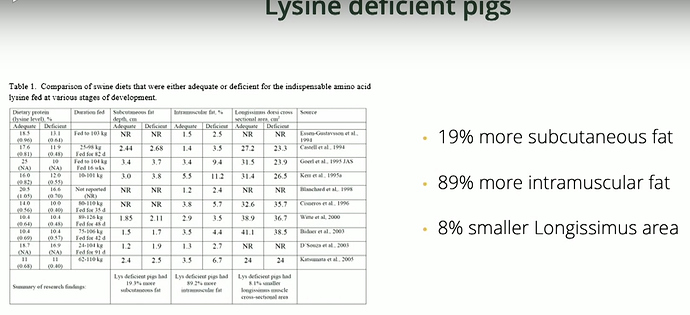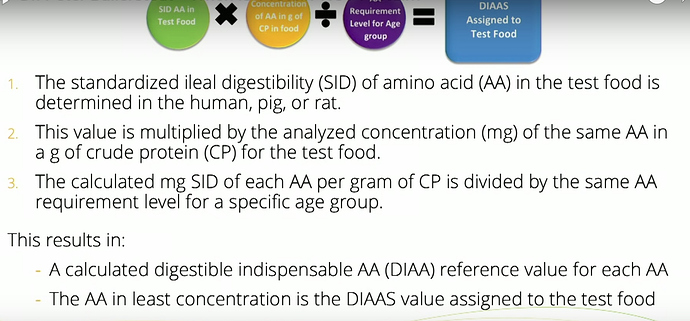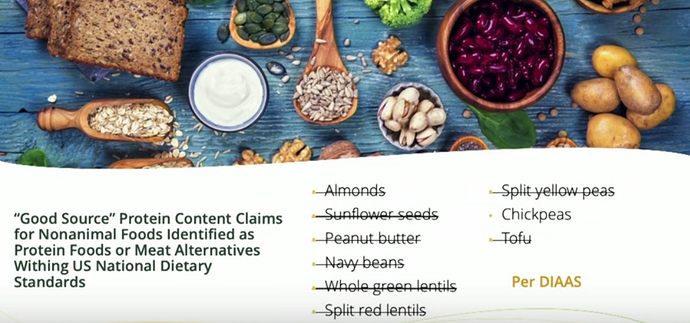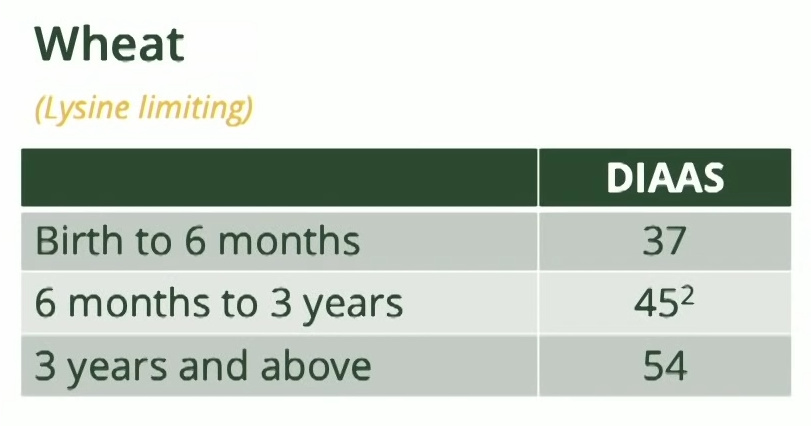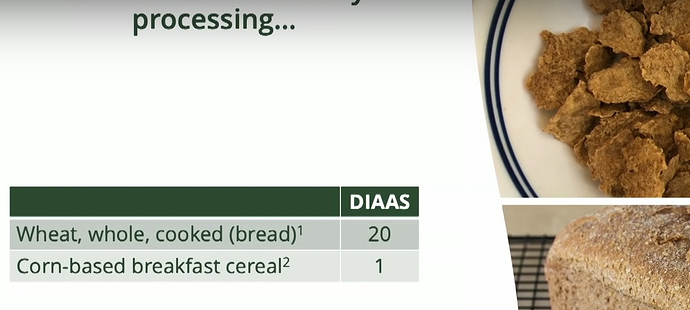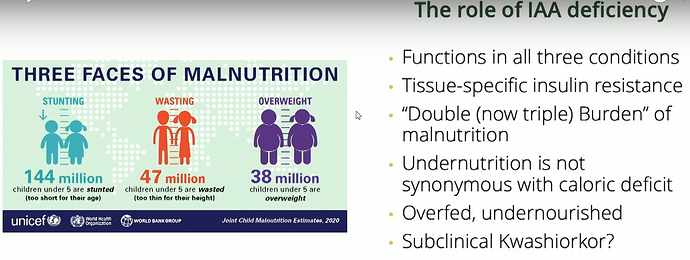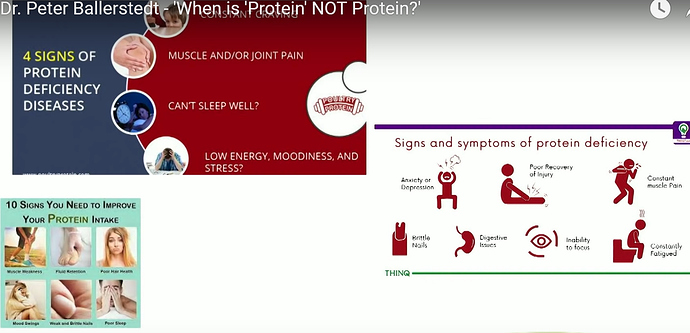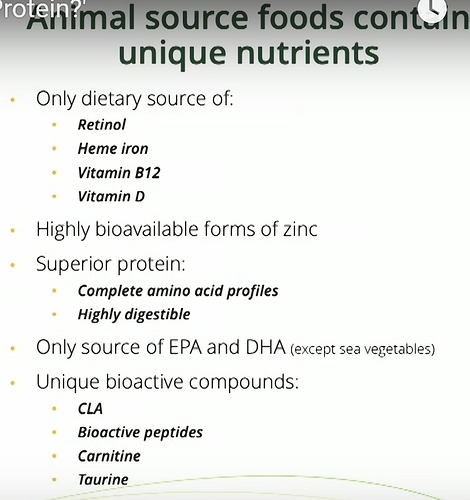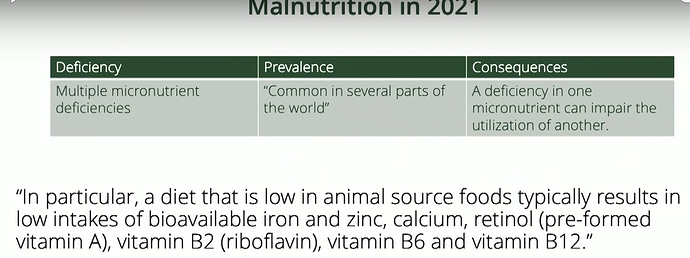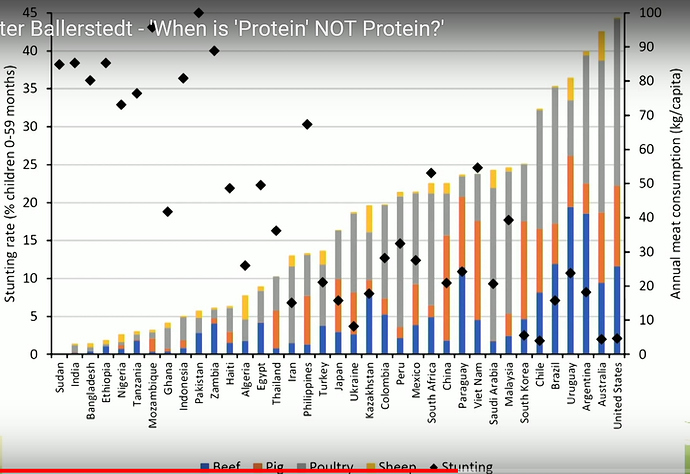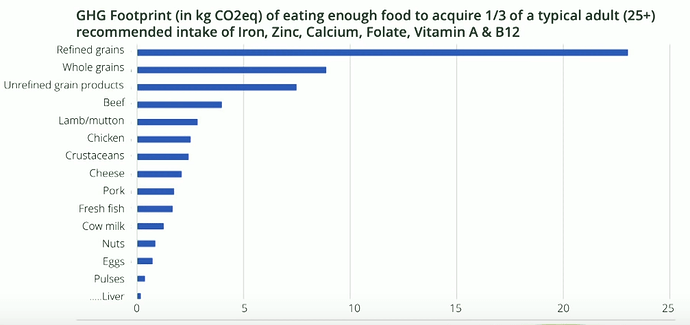Peter Ballerstedt on protein quality
Questions from a vegetarian
Lmhr
Preferences to tracking (apps, devices, etc.)?
Rudolph the Red Meat Ruminant
Is there a “video” resources category? If it’s not a podcast, I can’t listen to it. No time.
In this case, while the visuals were helpful, I didn’t find them necessary for understanding the lecture.
I just meant that if this was in “videos”, I could safely ignore it, as I know I could never see it. That is, I have no time for videos.
@ctviggen how do you do your continuing education with respect to dietary science? Personally I find letting a lecture run while I do something else is the only way I have time. But there might be others in your situation.
Vegetarian Keto™ Anyone. Didn’t think so.
PS: Thank you, Paul, for this link!
On the same topic, worth checking out the study below. In summary, this was a randomised trial plant versus animal protein equating grams of protein consumed in healthy young adults. Results showed greater gain in whole body net protein balance above baseline in animal consumption (beef, pork and eggs). Animal products also supressed protein breakdown. The findings were correlated with the essential amino acid content of the animal food.
Here is the paper that Prof. Ballerstedt cites in the lecture, regarding the differences between PDCASS and DIASS.
“I’ve publicly stated if you can’t get it from an animal, you don’t need it.” (Approximately)
I read or listen to a podcast. For instance, if I had a transcript of a one hour video, I could probably read it in maybe 5 minutes. Maybe 10.
I’ve already heard Peter give a similar talk on a podcast.
For video, I have no time. As in negative time. I’m at work now, but at home, I have 4 projects sitting on my desk that have been there for months. I have a server that has a bad drive, but don’t have time to fix it. I have all the parts for a new server, but don’t have time to put it together and get it running. I have 4 lights to add to my bedroom, and all the parts, equipment, and know-how, and can’t do it.
I could list – easily – another 30 items on my “to do” list that I can’t get done right now. Maybe 50 if I thought about it. I have many items in boxes waiting for me to unbox them and actually use them.
And we host Christmas, meaning I’ll be cooking a ton.
So, unless it’s a blog or I can listen to it on my way to/from work, I can’t do it.
Edit: Forgot to mention that my mother is in a rehab facility and has just been transferred to long term care. I take care of her two cats, and try to see her daily. As an attorney, I make money by billing out. Every hour I spend with her (and getting to there/back) is an hour I have to make up, over the weekend. So, I have to work weekends, which gives me little time to do anything else.
Videos for me are out.
@ctviggen Every YouTube video automagically generates a transcript. It’s not pretty but readable.
I typically find podcasts on youtube that don’t require the video to understand and just listen on 2x. Not as quick as reading, but saves time. So I definitely understand where you’re coming from.
I came to share a summary, semi-transcript, and screenshots of graphs, on this talk. Figured it’d be a thread here already. 
Below is a selective, often paraphrased, sometimes more succinct, compilation by me of a few quotes and/or points and/or actual transcript. Excuse imperfections I did this casually on the fly, hope it’s still worthy. - PJ
Dr. Peter J. Ballerstedt
LowCarb USA San Diego 2021
…Isocaloric quantities of plant and animal foods are not isometabolic, right… energy from plants is what, sugar, starch… energy from animal source foods is what, it’s fat, yummy, we’ll get to protein in a second. If I could somehow provide isometric quantities of protein and minerals from plants and animals those are not going to evoke the same metabolic response in humans right. OK… and then here’s the kicker, that the vitamin requirement we have seems to be influenced by where our energy and protein is coming from. And too often these … are not included in the calculations about global systems, security and food status.
Objectives for the talk
The difference between crude protein and true protein…
Crude protein is not true protein.
I’ve explained this to some fairly intelligent people that when you look at a food label and it says protein, or in a food table, or in your tracker, or when you’re tracking your macros, that’s not protein. And I get this look from some… so maybe it’s worth repeating it.
RDA… too many people think it’s a target, in fact it’s a minimum.
Assumed to be “reference protein” ("…high digestible, high-quality protein such as egg, meat, milk or fish")
So if you’re not getting your protein from meat eggs dairy seafood, you need more in order to get to the minimum.
I’m gonna clean it up a bit, just focus on 2013 data, same format but notice, I’m making it a point, this is CRUDE protein. (Notice before they just had it labeled ‘protein,’ you gotta watch 'em.) So here’s your 0.8g per kg of “reference protein” but some people look at this and go, “Oh look we’re exceeding the protein requirements in every region of the world. Protein isn’t a nutrient of concern.”
Really? Well, let’s continue. In fact we have data that suggests that maybe the target is set too low, or it’s not a target as I said, RDA is a minimum. Maybe we oughtta be shooting for 1.2-1.6g of high quality protein per kg bodyweight.
Same data, everything’s the same except I had to expand the vertical axis, because if you try to calculate protein intake on a percent of calories like they do in the ‘acceptable macronutrient distribution range’ from 10-35% of calories, then that’s the range you would see, extending from minimum up to 202g for a 70 kg individual.
But the good news is we have a great deal of safety in terms of the potential intake for this, tolerable upper level of 3.5 g per kg bodyweight and yes it’s grams of bodyweight, not lean body mass. And you need to pay attention to that in the literature because they switch that around and make it confusing. Or ‘ideal body weight’ is another way they express it, and it’s like good luck finding that, right. Bad enough to just go off body weight.
So this is what it looks like… this is where SOME would have us ingesting protein. I don’t think so!
OK back to the crude protein supply, globally we’re looking at the average across the globe and we know this is gonna vary tremendously but this is where we are. So if anybody says we should be eating “plant based diets” – we already are. Maybe that’s the problem. But I digest… {pun}
So humanity gets less of its protein supply from all animal source foods combined than it does from cereals. And wheat is the single largest source of crude protein in humanity’s diet. I’m certain that’s the problem (laughs).
So this paper just came out in '21
Again we’re looking at the same exercise where we’ve got – the plant source is the green on the bottom, the animal is the peach color at the top – and this is looking at 103 countries and territories that qualify in low and middle income. And some people look at this and they see the average daily protein requirement line, and they say, “Well look at how many are exceeding it, therefore protein is not a nutrient of concern.”
These authors took it a little bit deeper. They said “First of all, let’s adjust it for digestibility.” That’s a good idea, yeah? Just because it’s THERE doesn’t mean we can absorb it, right?
So just doing that one adjustment look at how it changes the picture. And now because the amount of protein we can utilize, is limited by the “limiting amino acid” – this is how much they could UTILIZE.
And now none of those 103 countries are meeting their protein requirements. Changes the picture completely. And this is a reality for a substantial portion of the globe.
But understand, an 8 year old boy physically couldn’t eat enough rice and lentils if he had unlimited access – physically couldn’t eat enough to meet his lysine requirements.
We’ve got some narratives that have been part of this convention wisdom for a long time but they needed to be rooted out. But like bermuda grass or johnson grass it’s got runners and roots that extend a long way, so we’ve got a lot of work ahead of us.
But don’t think this is something that only pertains in low and middle income countries. This is from, remarkably enough, the 2015 Dietary Guidelines Advisory Committee Report. And from these data they stated that protein was not a nutrient of concern – that is, too little – in the American diet.
Let me explain what’s going on here. We’ve got different age groups here, we’ve got excess, we’ve got below and above recommendations, that’s the split on either side of the center line, and males, females by different age groups, and over 40% of Americans in 2015 weren’t getting enough protein. And this is CRUDE protein. And this is based on an RDA of 0.8g/kg.
So they’re shooting at a low target, and they’re over-inflating the value of the protein that’s being consumed. And most females over the age of 8 aren’t getting enough protein. In the United States!
Take home message is: intake targets should be based on a specific amount of high quality protein, based upon individual considerations. Once again I’m not that kind of doctor, so find one, find what works, maybe we’re back, still in the personal exploration phase to find what works… there are guidelines, we should follow them. But they should not be on a percent of calories basis. That make sense?
We need a specific amount regardless of how many calories we consume during the day, and by the way it’s virtually impossible to estimate or measure or whatever, the calories we’re consuming. Then again, crude protein overestimates the content of plant-based foods. So if that’s the primary part of your diet you need to adjust that upwards. …You need to pay attention to the indispensible amino acids that are provided by what you’re eating.
Again, different categories, some of these are now in flux within the science, people are arguing about whether these classical terms are even appropriate anymore. That just because we can make ‘some’ aminos doesn’t mean that we can make ENOUGH of them, under certain conditions, and especially if we start concocting really bizarre diets or food-like substances that become the basis of the diet.
This is where it starts to cross over to where I’m more comfortable and familiar with. Animal nutrition is a functional and scientific discipline. Alright, there’s test, there’s evaluation, at the end of the day we don’t blame the cow. …If the production doesn’t match what the nutritionist said it should be. Nutritionists get fired every day in animal agriculture. We have hard end-points. …for almost half a century, swine nutritionists have been balancing their rations on an individual indispensible amino acid basis. Which by the way has been a recommendation of the FAO since 2013. They’ve also recommended that individual indispensible amino acids be listed on food labels as individual nutrients. Haven’t seen a lot of progress on that.
PVT TIM HILL, an acronym. Phenylalanine, Valine, Threonine is the private. Tryptophan, Isoleucine, Methionine is Tim. Histidine, Leucine, Lysine is Hill. This is how we teach our students to remember the indispensible amino acids.
I’ve used this (liebig’s? sp?) Barrell before to make the point that I believe that hyperinsulinemia is the short-stave that is the greatest insult to public health today. And that you can futz about with the other staves but you’re not gonna hold any more water until you raise that short stave.
These people are using the same analogy but with the indispensible amino acids. Again, protein value depends on the first “limiting” amino acid. Which determines how much of all the other amino acids can be absorbed and utilized. This is a BIG DEAL in animal agriculture because if you don’t have the right balance you’re going to be excreting more nitrogen, which is then an environmental issue. You’re also not gonna be getting efficient use of the feed, and the necessary performance from the animals.
So in this case, when you had lysine that was limiting, you raised lysine, and now one of these others (is the limiter) – threonine in this case, or still lysine, right you could bump it up a little bit more, and then the threonine is gonna be the limiting amino acid.
What happens when we feed swine a lysine-deficient diet?
(More fat, and muscle wasting.)
Individuals in those disciplines, refer to this as “metabolic syndrome.” That’s interesting.
We’ve used something called PDCAAS for a few years, Protein Digestibility Corrected Amino Acid Score. Which has always had a few limitations, which were always known, but it’s one of those things where we’re limited by funding or technology or what have you. It over-estimated the digestibility of plant-source protein, and under-estimated through truncation the value of the animal-source foods. And it also had really limited estimating ability for bioavailability.
About 2013 a WHO expert panel made the recommendation that we need to move to something called DIAAS Digestible Indispensible Amino Acid Score. This is something that will rely on pig ileal samples rather than rat fecal samples to determine digestibility. And if you understand the terms, you already understand some of the difficulty involved. This gets more and more expensive, but it’s a very complicated thing. And we can no longer rely on micro(k…?sp?) to give us percentage nitrogen and just do the math in a spreadsheet.
Individual amino acids are looked at, in DIAAS as opposed to crude protein, which is used in PDCAAS. There are 3 scoring patterns based on stage of life, in DIAAS. There’s 1 in PDCAAS. Again I mentioned there’s no truncation. All of the animal source foods that had values over 100 in PDCAAS were capped at 100 so there was no ability for an animal source food to compliment lower-quality plant source foods in the diet. Now with DIAAS we have that ability.
Let’s just look at practical application. I think if you look at this list of protein foods, most of those would fit in someone’s understanding of a good protein source, yes? Well even by PDCAAS the almonds, sunflower seeds and peanut butter don’t qualify. When we go to DIAAS, only chickpeas qualify.
Here’s something that knocked me over when I first realized it. In forage agronomy we’ve spent years teaching farmers to test individual lots of hay. So a lot would be one cutting from one field in a year, for example. So long as that field is the same planting. We teach them how to do that so it’s a representative sample. We teach them to send that sample to an accredited laboratory. Because the nutritive value varies so much! That’s true for all plant-source foods. They’re far more variable in their nutrient content than animal source foods. By nature. We sort of had this control process in place with the animal, right.
So in one database of almost 6000 soybeans, the value for crude protein varied by 20% plus and minus around the mean. Individual amino acids could vary by 45%! I’m pretty sure they don’t print a new label for every batch of soybeans that rolls in. And when you look at a food table that’s some kind of “average value” yes? And a good table will tell you how many observations went in – in some parts of the world, some of the foods aren’t even listed or there’s only one observation. Really limited values and data available even today.
I mentioned wheat was the primary protein source for humanity, but even it can vary from 9-15% depending, different market classes of wheat intentionally have a different protein content. Then you have differences in management, year and stuff. This can vary quite a bit. So they’re saying there’s so much wheat times this value that’s the protein we’re getting from wheat.
…Wheat as I mentioned is a really poor source of protein for humans. The DIAAS value for children – it will only meet less than 40% of the needs as a single source. OK, you’re not gonna mac on wheat berries if you’re between birth and six months, you get marginally better as we grow older, fine whopping 54% once we get above three years, but then we make it worse when we process it.
We don’t munch wheat berries, we make it into bread, into breakfast cereal, and we drive that value down. Because all this processing inactivates lysine which is already the limiting nutrient. So we make whole wheat bread we cut that value in half. We make it into a corn-based kind of breakfast cereal and virtually nothing as far as protein.
Now imagine that instead of putting real milk on that cereal, somebody starts putting plant juice!
Doesn’t happen with animal source foods. If you overcook a steak, yes you will drive that value below 100, it will no longer be an ‘excellent’ source of protein and you should be ashamed of yourself. {laughter} But the marvelous thing is, I can take a pork belly and make bacon out of it, and make it better!! nutritionally!! obviously it’s better I mean it’s bacon. We INCREASE the protein digestibility when we make the dreaded ‘processed meats.’ So here we can take a lower value like the trim off beef or pork when we make charcuterie, which is a fancier way of saying lunchmeat, and we can actually increase it when we make bologna out of it, or ferment it to make salami. We improve its nutritive value. I’d say that’s good news.
There’s this interesting observation now that perhaps some part of what we’re seeing as this – I’m sorry, “pandemic of metabolic illness” – is some manifestation of a deficiency of indispensible amino acids.
I’m gonna go over this pretty quickly, for time, but that last bullet, ‘subclinical Kwashiorkor’ is something to think about. I’m told that word is “what happens to the baby when the new baby comes.” You’ve got the mother breastfeeding the child, then the next baby comes, so that first baby’s displaced onto cereal. Then you see the essential amino acid deficiencies show up.
And you can see all kinds of graphics talking about protein deficiency –
But we need to stop talking about it as (merely) ‘protein’. We need to get more specific. This is a deficiency of our indispensible amino acids. Now the meat industry has positioned itself for a number of reasons that I can understand, as the protein industry. But I don’t think that’s a winning strategy now, I think we need to broaden that out and look at ALL of the nutrients that we get from animal-source foods.
But all of that stuff that I just went through is a lot to put on somebody, right? In some cases the information isn’t even available to the consumer. Better to just say, “Whatever animal-source food is appropriate to you, is affordable to you, is available to you, enjoy that as part of your meals.” Or, make it your entire meal. Whatever. But animal-source food is essential. Especially when we’re talking about pregnant women, nursing women, developing children, and then later in life.
So when we start looking at these highly processed things that come in, that becomes a question that I start to go wait a minute. We now processing will influence the nutritive value from a human perspective. And we know that animal source foods provide these unique and essential nutrients. Sometimes they’re the sole source, sometimes they’re the best source. But if you’re gonna remove all animal source food from the diet, then we’ve got a bigger job.
And when we start, from a nutritive sense, depending on a lower quality diet, then we end up consuming more carbohydrates to make up for it.
And that’s that protein to energy balance I mentioned earlier. I’m asking the question of everyone I can: is there such thing as TOO LITTLE animal source food in the human diet? Well, YES. There’s evidence from when people who by circumstances are forced to consume low-quality, grain-based diets.
The first 1000 days we’ve got 1/3 of women of childbearing age being anemic globally. B12 deficiency is widespread even in the United States. Only 40% of infants 6 months or less are exclusively breastfed.
And this is, again, where you kind of see the narrative coming in: In this WHO document, we have them making the statement that animal source foods are the best sources of high-quality nutrients for children 6-23 months of age. The WHO said it. But they said it a couple of footnotes down! It wasn’t up in the text. Why would you do that? … moving along. Unfortunately 59% of children (6-23 months, globally) are not fed eggs, dairy, fish or meat. That’s a shame. That’s a scandal. We can, we must do better.
This is the relationship between the consumption of meat of various kinds and the degree of stunting in these various countries. And just… association doesn’t prove causation but I’m willing to go with it. And I’m certainly not willing to follow the eat Lancet recommendations. Seems to me like that’s taking us in the wrong direction.
Remember stunting isn’t merely stature. It is preventing that human being from achieving its full potential. And stunting isn’t just from a lack of animal-source food, it can be from poor harvest or poor storage conditions for cereals, pulses and nuts, that develop aflotoxin contamination.
There have been studies done demonstrating the efficacy of really modest interventions in school children. So now we’ve gone beyond the infant, we’re looking at schoolchildren. Just an egg a day – small amount of animal food to supplement their traditional local diet – and they can document cognitive and scholastic differences in the children that receive those interventions.
When you get to be an old fart like me you’ve already heard it, that we need more high-quality protein in our diet, than someone who’s in their 20s or 30s. So when it comes to the consumption of animal food there IS such a thing as too little. Is there REALLY such a thing as too much?? You hear this all the time! I do.
I’ll sit in these meetings where people are talking about sustainable livestock systems in Africa or in Asia or globally, and they’ll say, “We need more animal-source food available to people in those parts of the country, but those Westerners are consuming too much.” What does that look like?? What do they think health-wise comes from too much animal source food??
I’m here to say the preponderance of high-quality evidence, as opposed to nutritional epidemiology of chronic diseases, from all scientific disciplines, strongly suggests the most likely harm associated with animal source food consumption is from not consuming enough.
And when we start to factor in the ‘quality’ of these different foods, the environment impact gets dramatically reduced. Again back to this paper, you can see from left to right when you correct from total protein to digestible lysine. These differences either reverse in some cases or they go away.
Cattle in the USA produce 240% more human-consumable lysine than they consume in corn, over their lifetime. They are tremendous upcyclers. Again, the food that goes in, the food that comes out is much more valuable. So any conversation about feed vs. food, we have to account for that, we too often don’t.
This is a paper in process, try to account for nutrients beyond protein, beyond the essential AA – as important as those are – and you can see the vast difference in greenhouse gas emissions if you were to try to meet those nutrients from refined grains or even the ‘healthy whole grains’ up here vs. liver or eggs or cow milk or pork or even beef.
And here’s the kicker for all of this. In the latest IPCC report that just came out, they admit that they’ve been using the wrong metric to estimate the impact of enteric methane on the environment. They’re only off between 3 and 4 times! … so it’s fine, really (sarcasm)
A steak a day keeps the doctor away.
How would a consumer know how to adjust from an omniverous diet, basically removing animal foods, how would they know what to do, to ensure that they get the essential nutrition that they must have? Whenever you start reading stuff about protein energy ratios, you gotta know what they’re measuring and reporting. This happens with environmental impacts as well, models, what are they predicting, the policy questions, why are they not applying the available science?
(end. Then questions:)
Q: Question about bioavailability of all the micronutrients. Can you get everything from meat and fish and chicken, can you get vitamin C or does that have to come from plant material?
A: I have been known to say in public that if you can’t get it from animal-source food you don’t need it. That would include fiber and vitamin C. I would refer people to work by folks like Amber O’Hearn, who’s covered in greater depth than I could what’s going on with vitamin C, because it may be that a diet higher in carbohydrate increases your requirement for vitamin C. She makes the point that going way back, it was known that one of the things that cured scurvy was fresh meat.
Again back to the test results when you look up in a really GOOD food table, when they put zero for vitamin C in the meat there should be an asterisk and down in the footnote there should be a note ‘assumed to be zero’ – not measured, but assumed. Lots of confounders in the story. Some would point to people whose traditional diet was exclusively or almost animal source food and they didn’t have scurvy. Not a lot of citrus in the arctic but the Inuit didn’t have scurvy.
Q: Did you suggest lysine deficiency equals more internal fat accumulation?
A: Yes. Lysine deficiency increases fat…
/end
@ctviggen, wow. Your post just made me sit in silence (and gratitude) for awhile to absorb your circumstances. I think the sentence that grabbed me was that as an attorney you bring in money by billing out, so time spent with your mom must be made up over the weekend.
I’ve been retired a few years now, and I never had the high pressure or income of an attorney. But I had an ailing mother to care for, a special needs son, a job, and a struggling marriage. Every unscheduled event became one more plate to keep spinning. It’s a hard spot to be in.
It’s admirable that you are keeping your health in focus. I let my body (and soul) suffer during those years.
So here’s to you… working it all out.
Thanks, PJ, for doing the work to transcribe that. Wow!
Holy moly, that’s a lot of work! Thanks so much!
I listen to You Tube lectures on headphones while arting and cleaning the house. If the speaker is a slow talker, I just up the playback speed.
I think a close talker is someone who gets too close to the microphone, and makes it hard to understand. Increasing the speed might not help.
I sometimes increase the speed and sometimes not, for both books and podcasts. Books in particular can sound strange.

